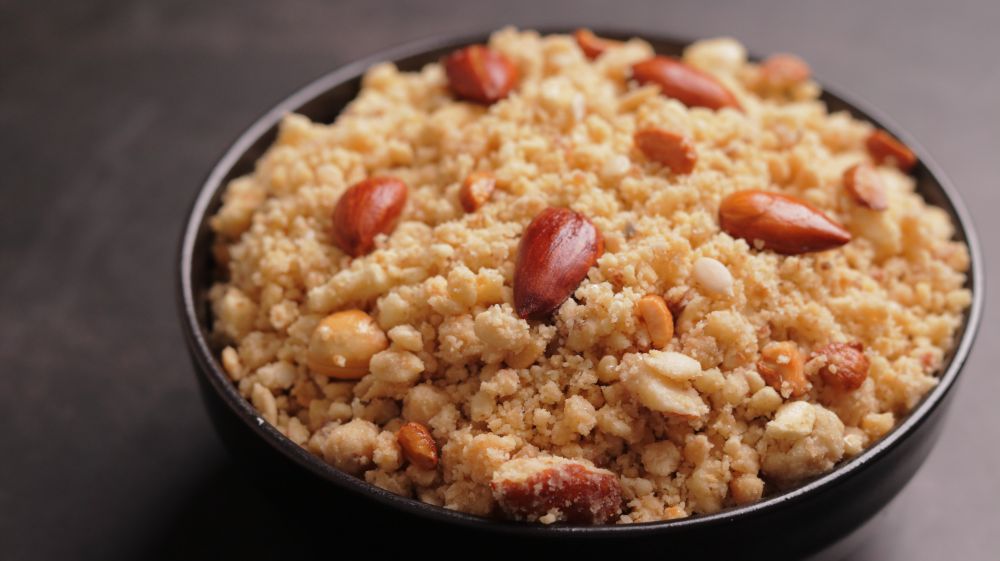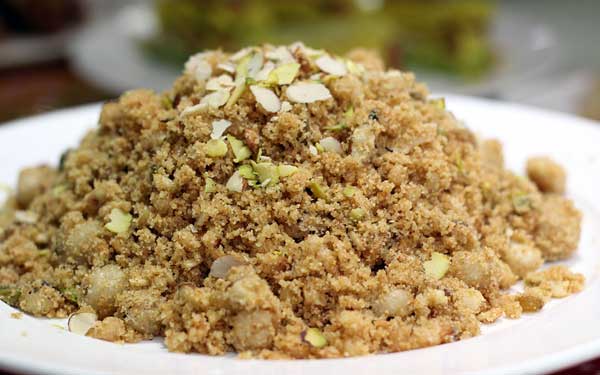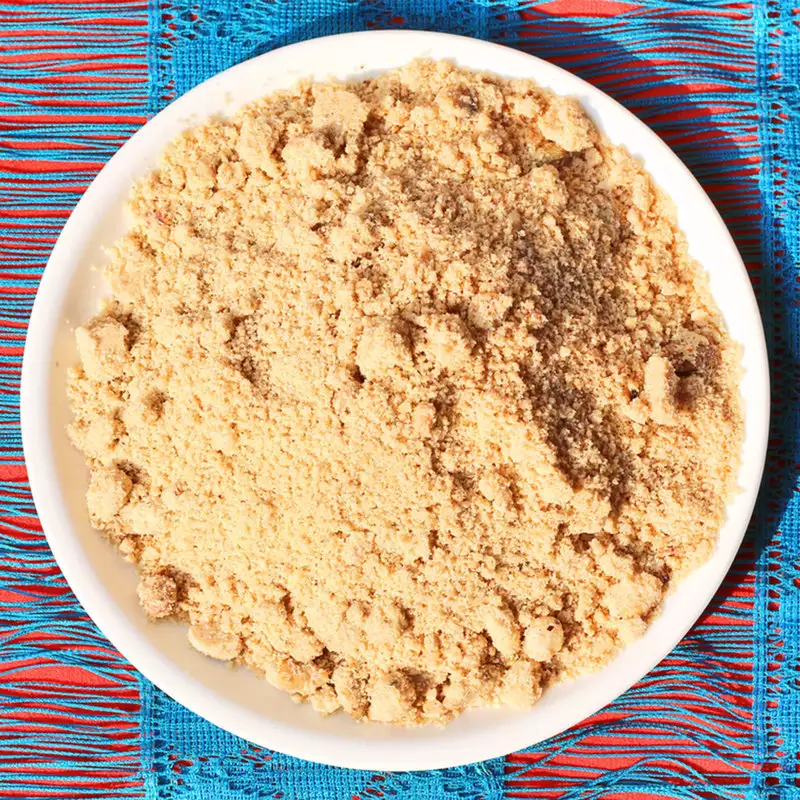
Panjiri Recipe: Panjiri is a traditional Punjabi winter treat, loved for its warm, nutty flavors and simplicity. Made with whole wheat flour, powdered sugar, and ghee, this recipe is perfect for colder months when you’re craving something sweet and wholesome. This version is a family favorite, cherished for its simplicity and nutritious ingredients.
What is Panjiri?
Panjiri is a popular North Indian sweet that combines roasted whole wheat flour with sugar and ghee, often enriched with dry fruits. Known for its warming properties, it’s traditionally enjoyed during winter and is even recommended as a nutritious postpartum snack. The dish has a delightful, crumbly texture and stays fresh for weeks, making it ideal for prepping in batches to enjoy throughout the season.

Panjiri Recipe Tips
- Sweetener Options: Traditional Panjiri often uses khand or khandsari (raw, unrefined cane sugar). You can substitute it with jaggery powder, powdered white sugar, or organic sugar if preferred.
- Optional Ingredients: Adding dry fruits like almonds, cashews, raisins, and edible gum (gond) is common. Gond makes this recipe especially warming and is perfect for postpartum diets. Desiccated coconut is another delicious addition if you want an extra layer of flavor.
- Storage: Panjiri has a long shelf life when stored in an airtight container. It can be enjoyed plain or with warm milk.
Ingredients: Panjiri Recipe
- Whole Wheat Flour: 1 cup (120 grams)
- Raw or Powdered Sugar: ½ cup (or 80 grams), or use your preferred sweetener
- Cashews or Almonds: 15-18, or a mix of both
- Raisins: 15-18
- Ghee (Clarified Butter): 4 tablespoons
Panjiri Recipe: Step-by-Step Guide
Step 1: Prepare the Sugar
- Powder ½ cup sugar in a grinder and set it aside. You can use raw sugar, khand, or cane sugar.
Step 2: Roast the Wheat Flour
- In a thick-bottomed pan or kadai, add 1 cup of whole wheat flour.
- On low heat, roast the flour while stirring frequently to ensure it doesn’t burn. This will take about 9 to 12 minutes.
- The flour should turn a warm golden color, and you’ll notice a nutty aroma. At this point, the flour is fully roasted.
Step 3: Add Ghee and Nuts
- Add 4 tablespoons of ghee to the pan and mix it well with the flour.
- Add 15-18 cashews and continue stirring the mixture. You can also add almonds if you prefer, but roast them separately first.
- Roast the mixture for another 5 to 6 minutes until the ghee fully coats the flour, and the flour has a cooked flavor.
Step 4: Add Sugar and Raisins
- Turn off the heat and begin adding the powdered sugar in portions, stirring each time to mix it evenly.
- After adding all the sugar, toss in 15-18 raisins and give it a final stir.
Step 5: Store or Serve
- Allow the Panjiri to cool, then store it in an airtight container. Serve it plain or with a glass of warm milk for a comforting treat.

Expert Tips: Panjiri Recipe
- Consistent Stirring: Regularly stirring ensures the flour roasts evenly and prevents burning.
- Choose Your Dry Fruits: Feel free to mix in your favorite dry fruits like almonds, cashews, or pistachios.
- Batch Cooking: Panjiri stores well for weeks, so double the recipe if you want to have a supply on hand.
- Customize Sweetness: You can adjust the sugar quantity to your preference for a sweeter or milder flavor.
- Add Gond for Extra Nutrition: Edible gum (gond) can be added for its health benefits, especially for postpartum nourishment.
FAQs about Panjiri Recipe
Can I use jaggery instead of sugar?
Yes, powdered jaggery can be used for a more earthy flavor and added nutrients. Just ensure it is finely powdered to mix well with the flour.
Can I skip the dry fruits in Panjiri?
Absolutely. While dry fruits add texture and nutrients, you can skip them or use only the ones you prefer.
How do I store Panjiri, and how long does it last?
Panjiri can be stored in an airtight container at room temperature for several weeks. It stays fresh and retains its taste, making it great for make-ahead batches.
Can I make Panjiri without ghee?
Ghee is an essential ingredient that gives Panjiri its signature flavor and texture. However, you can reduce the amount if needed, though it will impact the taste.
Is Panjiri suitable for children?
Yes, Panjiri is often made for children due to its wholesome ingredients. It’s rich in nutrients and can be a great snack during colder months.

